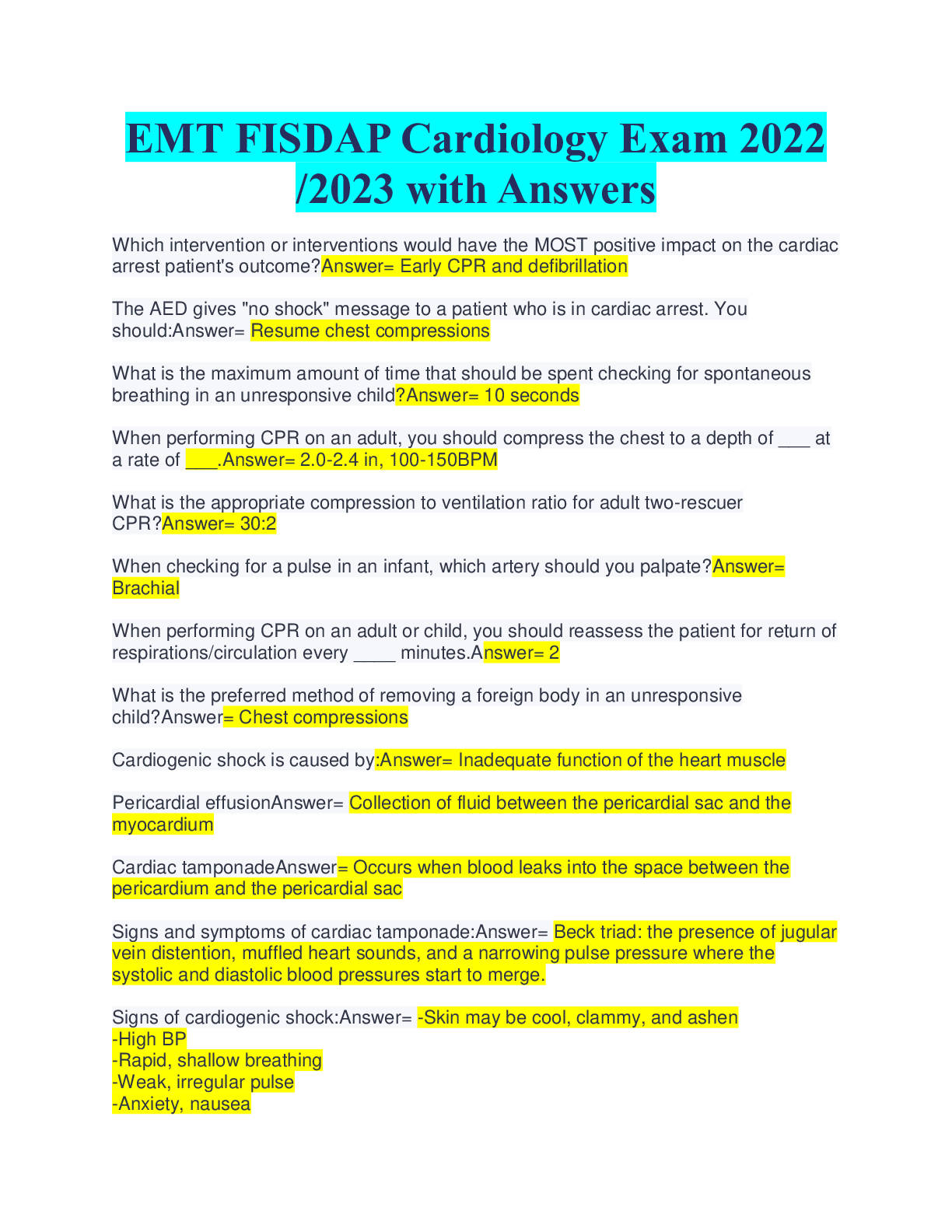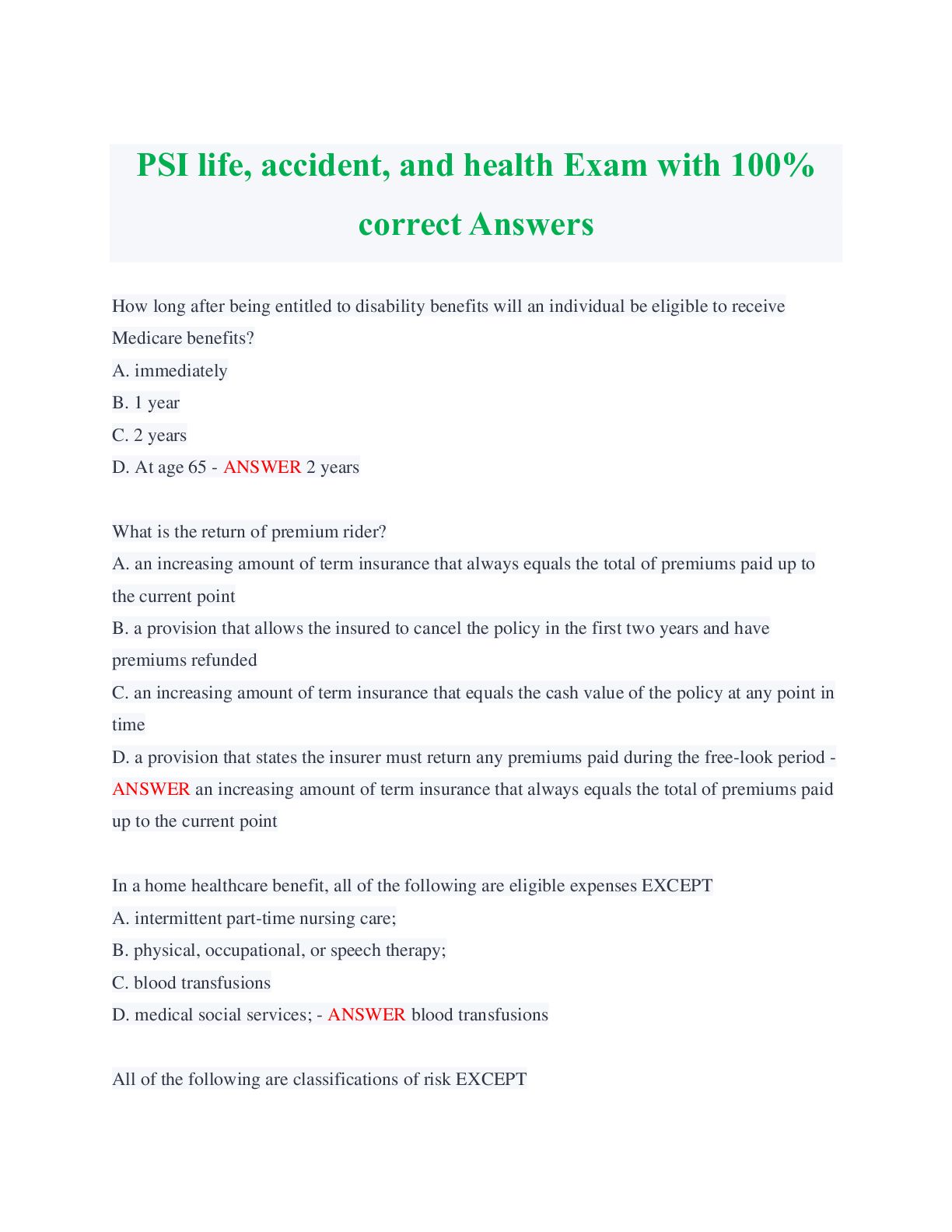EMT FISDAP Cardiology Exam 2022 /2023 with Answers
Document Content and Description Below
Which intervention or interventions would have the MOST positive impact on the cardiac arrest patient's outcome? - ANSWER Early CPR and defibrillation The AED gives "no shock" message to a patient ... who is in cardiac arrest. You should: - ANSWER Resume chest compressions What is the maximum amount of time that should be spent checking for spontaneous breathing in an unresponsive child? - ANSWER 10 seconds When performing CPR on an adult, you should compress the chest to a depth of ___ at a rate of ___. - ANSWER 2.0-2.4 in, 100-150BPM What is the appropriate compression to ventilation ratio for adult two-rescuer CPR? - ANSWER 30:2 When checking for a pulse in an infant, which artery should you palpate? - ANSWER Brachial When performing CPR on an adult or child, you should reassess the patient for return of respirations/circulation every ____ minutes. - ANSWER 2 What is the preferred method of removing a foreign body in an unresponsive child? - ANSWER Chest compressions Cardiogenic shock is caused by: - ANSWER Inadequate function of the heart muscle Pericardial effusion - ANSWER Collection of fluid between the pericardial sac and the myocardium Cardiac tamponade - ANSWER Occurs when blood leaks into the space between the pericardium and the pericardial sac Signs and symptoms of cardiac tamponade: - ANSWER Beck triad: the presence of jugular vein distention, muffled heart sounds, and a narrowing pulse pressure where the systolic and diastolic blood pressures start to merge. Signs of cardiogenic shock: - ANSWER -Skin may be cool, clammy, and ashen -High BP -Rapid, shallow breathing -Weak, irregular pulse -Anxiety, nausea You arrive on scene to find a conscious 58YOF sitting up and reporting severe chest pain and SOB. She is anxious and "feels like she's going to die." Her skin is pale, cool, and clammy and her pulse is rapid, weak, and irregular. Her breathing is labored, with a RR of 28 breaths/min. Her SpO2 is 90%. Lung sounds show crackles in all fields, and BP is 92/60 mmHg. What is your differential diagnosis of the patient? - ANSWER Cardiogenic shock The heart is divided down the middle into left and right sides by the: - ANSWER Septum [Show More]
Last updated: 2 years ago
Preview 1 out of 7 pages

Buy this document to get the full access instantly
Instant Download Access after purchase
Buy NowInstant download
We Accept:

Reviews( 0 )
$11.00
Can't find what you want? Try our AI powered Search
Document information
Connected school, study & course
About the document
Uploaded On
Aug 02, 2022
Number of pages
7
Written in
Additional information
This document has been written for:
Uploaded
Aug 02, 2022
Downloads
0
Views
96

















